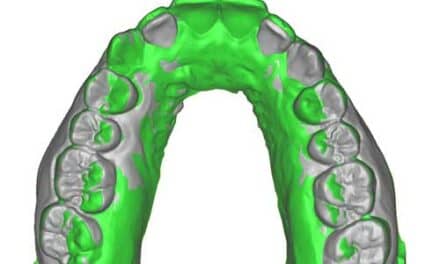
It’s an all-too-common scenario: A patient leaves their appointment motivated to keep on top of wearing their elastics, but inevitably, a few weeks later, the motivation disappears and they forget. By their next appointment, there is no progress, and extra visits are required to complete treatment.
For Hilton Goldreich, DDS, owner of Goldreich Orthodontics, these extra visits were not only prolonging treatment, but also costly to his practice. He knew that if the number of visits could be reduced, it would save the practice money. Inspiration on how to rectify this problem came from an unlikely source.
Goldreich had come across the research of BJ Fogg, PhD, founder of the Persuasive Technology Lab at Stanford University. Fogg focuses on creating systems aimed at changing human behavior, particularly using mobile devices. This idea of using mobile devices to change behavior struck Goldreich as a solution to his problem. So, he turned to Fogg’s behavior model, which states that behavior is the result of three elements: motivation, ability, and trigger (B=MAT).
For Goldreich, the behavior he wanted to change was for his patients to take a more active role in their treatment beyond the initial 2-week period after the appointment. He needed to foster motivation, give patients the ability to follow up with their treatment, and trigger them to keep up the positive behavior. All of these elements came to a crossroads with text messaging.
“As more and more kids were carrying their own cell phones, I began asking each one to set an alarm on their phone to remind themselves to wear their elastics, brush their teeth, or change their aligners.” One of Goldreich’s adult patients overheard Goldreich asking one of his younger patients to do just that.
“Richard, who happened to own a software company, realized these conversations were taking place at many appointments. A few weeks later, he walked into the office and proudly showed me a prototype of what soon matured into Orthodontext, a commercial Web-based service for doctors to use to remind their patients to do their part in their orthodontic treatment.”
Using Fogg’s concepts of changing behavior through mobile devices, Goldreich and the Orthodontext team have been able to help increase patient compliance and increase efficiencies at his own practice and in offices across the country.
Providing adequate education on how to maintain their treatment gives patients the ability to positively affect their treatment, while sending unlimited text reminders provides motivation and acts as the trigger—all of which work together to change the patient’s behavior.
“Some practices are sending out more than 15,000 texts per month,” Goldreich says. “They understand the importance of saving appointments and reducing treatment times by reminding their patients to do their part in their orthodontic treatment.”
Utilizing mobile technology can also help connect the patient to the practice in a new way, opening the line of communication so that each side can be more active in the treatment program. The Orthodontext technology allows patients to change their reminder times and communicate with the practice via text.
Additionally, as Goldreich explains, a practice is also notified when patients turn off the text reminders, thus actively ignoring the attempts at motivation and behavior triggers. Knowing this information is particularly helpful to the practice when treatment is delayed due to poor cooperation. “It enables the practice to make decisions about discontinuing treatment for noncompliance patients without the guilt,” he says. “That saves feelings, as well as resources.” OP





